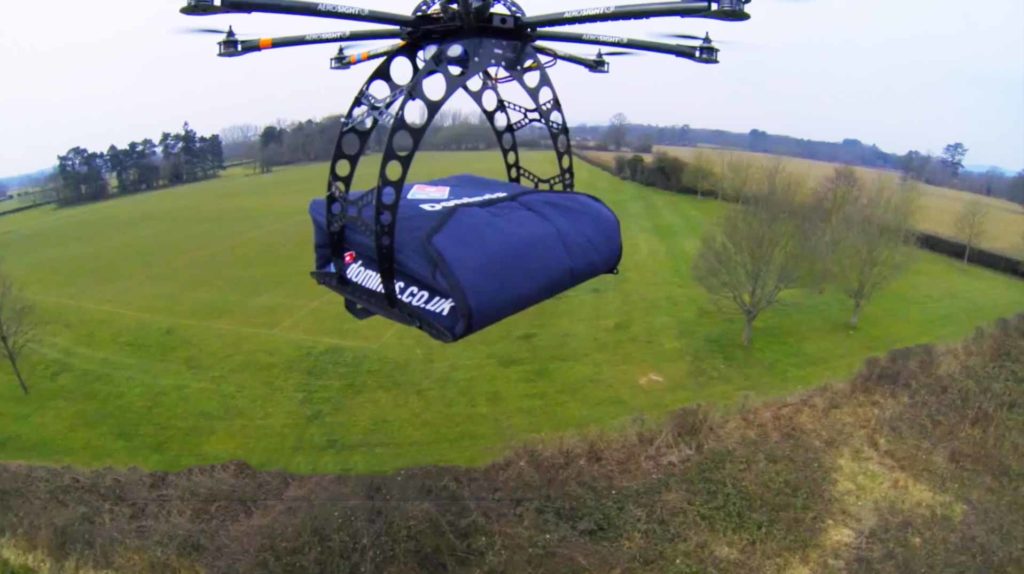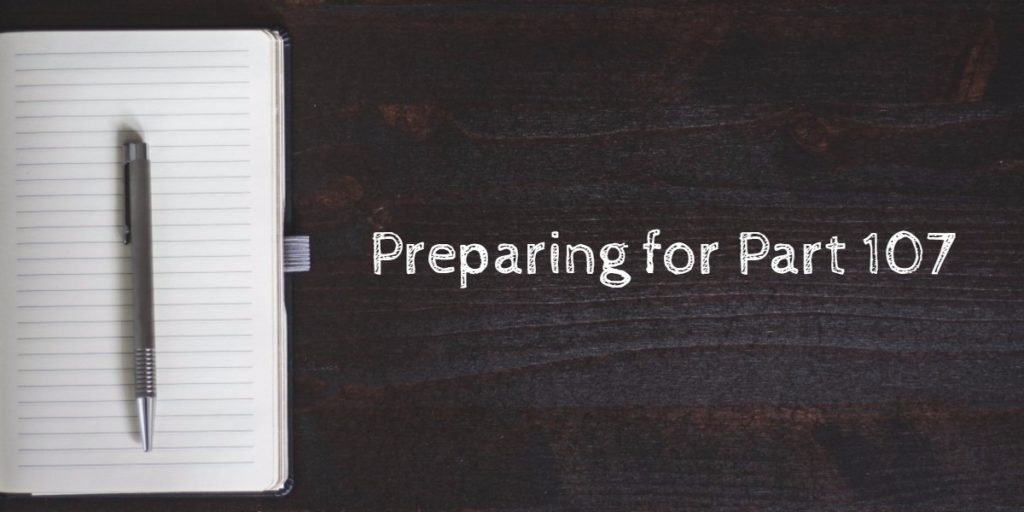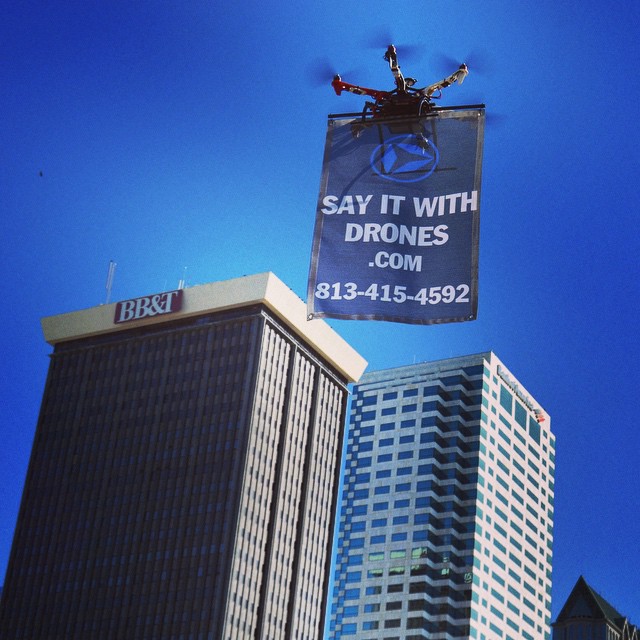The FAA forecasts there could be as many as 600,000 unmanned aircraft used commercially during the first year after this rule is in place. Drones are helping to create a whole new means of realizing the American dream.
– FAA Administrator Michael Huerta
You’ve probably noticed that the drone industry has completely taken off. But while there’s been plenty of action – both in terms of products and regulations – on the enthusiast side of things, commercial pilots in the U.S. have been left frustrated at the long-winded exemption process.
Before sweeping changes at the end of August, if you wanted to make money from your drone you were required to go through the Federal Aviation Administration’s (FAA) Section 333 exemption process. This took months of paperwork and thousands of dollars. It’s fair to say that these restrictions were holding plenty of would-be innovators behind. Now, the aviation authority has brought in sweeping rule changes to help get commercial pilots off the ground.
The Part 107 Rule came into effect on August 29, 2016. With it were a bunch of new guidelines that pilots are now required to follow if they want to fly for money. Among the biggest changes was the new requirement for commercial pilots to hold a license, which we’ll go into later on.
On top of that, strict restrictions have been placed on commercial flights to protect civilians while still enabling commercial industries to grow and develop.
The Part 107 Rule
So what does the new Part 107 Rule mean for you, as a potential or current commercial pilot in the United States?
Well, first of all, you’re going back to school. Not literally, of course, but you will need to study for and pass the FAA’s Remote Pilot Certificate with a small UAS rating exam. Once you get that license, there are going to be strict guidelines that all of your commercial flights will have to follow.
So let’s take a closer look at what the new ruling means for commercial pilots. After that, we’ll go deeper into the examination and certification process.
The Part 107 Rule – The Details

The Part 107 Rule covers plenty of bases. The new federal legislation states, among other things, that commercial pilots must:
- Pass the Transportation Security Administration’s vetting process
- Pass an Unmanned Aircraft General exam at one of 690 FAA testing centers across the United States
- Obtain a Remote Pilot Certificate with a small UAS rating (Obtained from passing the above exam)
- Keep on passing that same exam every two years if you want to keep hold of your license
- Be 16 or older
- Under no circumstances control more than one UAV at a time
- Make available to the FAA, upon request, your drone for inspection or testing, and any associated documents required to be kept under the proposed rule
- Report any serious accident to the FAA within 10 days
- Conduct preflight inspections to ensure the small UAS is safe for operation
Broadly, the details of the new ruling come under two separate categories: Operational limitations and your responsibilities as a commercial pilot.
Operational Limitations
There are a few unsurprising limitations placed on commercial flights under the new rules.
The first, and possibly the most important to many drone service providers out there, are the rules concerning ‘line-of-sight’. Many startups are now offering mapping and aerial photography services for agriculture, construction and media purposes. The FAA has ruled that none of these flights can take place beyond the pilot’s line of sight. Simply, if you can’t see your drone, your flight is illegal. Although flight planning software and obstacle avoidance are both evolving rapidly, this is a move to ease public fears and keep pilots accountable for their actions.
The rules also clearly state when and where commercial flights can take place. Firstly, pilots are only allowed to fly during daylight hours. Twilight flights – defined as the 30 minutes before or after sunrise or sunset – are only legal if your drone has “appropriate anti-collision lighting”. The FAA’s words, not ours.
But it’s the ‘where’ that will be of interest to most commercial pilots. The Part 107 Rule states that commercial drones cannot fly over people that aren’t directly participating in the operation. This pretty much means that, as a pilot in charge of a commercial flight, you’re going to have to clear the area of civilians before take off.
Something that hasn’t changed concerning drone flight is the altitude limit, which still stands at 400ft for commercial and recreational flyers. Part 107 also bans any commercial drones topping 100mph – arguably the one guideline that leaves pilots with plenty of room to maneuver.

Instagram – @PrecisionHawk
There are also a bunch of unsurprising rules that disallow flying while under the influence of alcohol or drugs (duh), controlling a commercial drone while inside a moving vehicle (what?), avoiding other users in the airspace (obviously), and conducting appropriate pre-flight checks. If you want to know more than all the details can be discovered in the FAA’s official Part 107 Summary document.
Feel as though the new part 107 rule is too harsh and directly conflicts with the kind of commercial flights you want to run or currently manage? Well, not all is lost, and you might not necessarily be grounded for long. The FAA states: “Most of the restrictions are able to be waived if the applicant demonstrates that his or her operation can safely be conducted under the terms of a certificate of waiver.”
A whopping 76 of these waivers were granted on the first day the Part 107 rule came into effect. FAA Administrator, Michael Huerta said, “We’ve found that when we are flexible, we open up greater opportunities.”
The Part 107 Rule – Pilot’s Responsibilities
Once you’ve gone through the arduous process of getting your pilot’s license from the FAA (more on that later) and you start flying for commercial purposes, there are still a bunch of rules that you’ll be required to follow when you’re on the ground.
To begin with, the FAA has called for pilots to “Make available, upon request, the small UAS for inspection or testing, and any associated documents/records required to be kept under the rule.” This is pretty confusing, as we’re not exactly sure what is meant by “associated documents/records”. To be on the safe side, we recommend that you have copies of your certification, and potentially even flight plans/logs from previous commercial operations with you when on an operation.
Another point concerning commercial pilots’ responsibilities in in regards to what to do if there’s an accident. Just as you would if you were involved in a car crash, the FAA demands to be notified in the event of a serious crash within 10 days of it occurring. ‘Serious’, according to the FAA, means that a person has suffered a serious injury, or there was property damage costing at least $500.
The FAA is also incredibly keen that pilots give their drones thorough pre-flight checks before any operation is carried out.
If you’ve got a lot of time on your hands or fancy some bedtime reading, the complete 624-page Part 107 rule is available in all its glory, right here.
The Part 107 Test – How to Become a Certified Commercial Pilot

So this is why you’re really here. What about that dreaded exam? Well, there’s plenty to say about the FAA’s aeronautical test. For starters, it’s going to cost you around $150 to become fully-qualified. That’s no biggy in the grand scheme of things, particularly if you go on to be an established commercial pilot, but still…
Second, you’ll need to find a local test center where you can sit the exam. Again, no big deal – There are hundreds around the US, so check out this list of FAA centers and give your local one a call.
Now for the bad news. This test isn’t going to be a walk in the park. Even if you’re an experienced pilot, you’ll still need to put in plenty of time and effort if you want to pass. Your first port of call should be the FAA’s recently released 87-page study guide. The official set of topics you will be questioned on has been outlined by the FAA is as follows:
- Applicable regulations relating to small unmanned aircraft system rating privileges, limitations, and flight operation
- Airspace classification and operating requirements, and flight restrictions affecting small unmanned aircraft operation
- Aviation weather sources and effects of weather on small unmanned aircraft performance
- Small unmanned aircraft loading and performance
- Emergency procedures
- Crew resource management
- Radio communication procedures
- Determining the performance of small unmanned aircraft
- Physiological effects of drugs and alcohol
- Aeronautical decision-making and judgment
- Airport operations
- Maintenance and pre-flight inspection procedures
So what do you need to know about the Part 107 test itself? Well, the format is multiple choice, so statistically speaking even if you were to guess every answer, you shouldn’t come away with anything less than 25%. Best not to bank on that though, as you’ll need 70% to pass. There are sixty questions, with one right answer from each possible four.
So what happens after you’ve put in all that time, studied your ass off and taken the test? First of all, you’ll need to wait for 48 hours to get the results, which will be posted online. Make the grade and you’ll be ready to apply through the FAA portal for your Remote Pilot Certificate.
Part of that application will include a background check and a vetting process. Pass through that successfully and you’ve pretty much made it. Just print out a temporary certificate while the real deal is sent through the mail.
One important point here: The FAA are keen for pilots to keep on developing their skills and not take commercial flying for granted. To that end, you’ll have to pass new versions of the Part 107 test every 2 years.

A Final Thought
Reading through all of this from a pilot’s perspective, it’s easy to sigh and shake your head at the hoops commercial operators are being forced to jump through just to do business. But really, commercial flyers are getting a pretty good deal, especially considering the system that was in place before.
With the tedious, long-winded Section 333 Exemption age now at an end, businesses can apply drone technology to solve problems quicker than ever before. Not only that, but a skeptical public is slowly going to be exposed to commercial UAVs. The speed of this transition is important. We all know that commercial drones are soon going to be ubiquitous – it’s only a matter of time. But while concerns remain over safety, privacy, and efficiency, taking things slow is probably a good idea. The FAA’s Part 107 Rule strikes a good balance between supporting a blossoming industry and keeping it in check while the technology is perfected.
